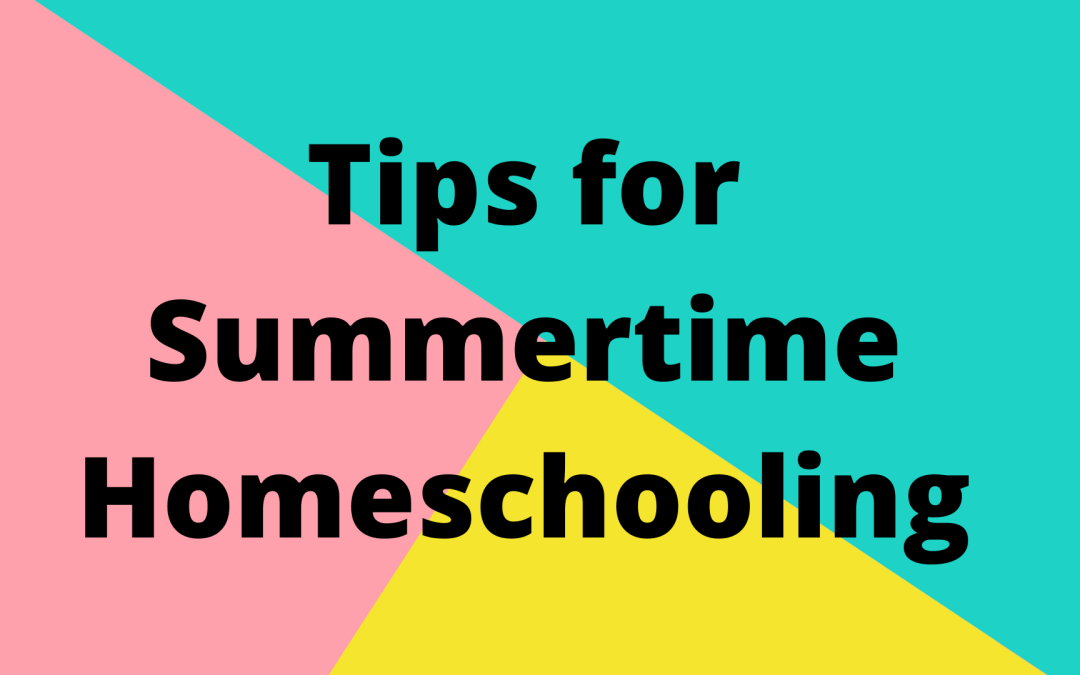Families who decide to homeschool their children have the flexibility to create a learning schedule that works best for them and their lifestyle. A common conflict that parents run into is scheduling schooling for half days all year versus full days and taking a summer break. Summertime can be more difficult for kids to focus as the weather is more enjoyable and their counterparts that go to in-person school typically have more free time. To help with this, there are a variety of things you can do to make your lesson plans more exciting. Keep reading for tips on how to adapt homeschooling lessons for summertime.
Take Lessons Outside
When the weather is sunny and warm, there’s no better place to be than the outdoors. During the summer, plan lessons that incorporate being outside and involve some form of physical exercise. A few examples are: taking a nature hike, planting a garden, or practicing their writing in chalk. Visiting local parks or planning picnics and reading time are other educational suggestions. If you run low on ideas, utilize sites like pinterest to find new ideas and activities.
Schedule Breaks
When planning your homeschool schedule in the summer make sure to take a more relaxed approach. Allow time for longer lunches even if that means starting earlier. Also, to limit burnout, try to incorporate breaks in the afternoon for outdoor play, like tag or swimming. If your town has a community pool or playground try visiting these spots a few times a week. If you plan on taking a summer vacation, teach a lesson plan the week before that helps your children learn more about where they will be visiting. This is a fun way to get them excited about the trip!
Foster Responsibility
With lemonade stands and garage sales being popular summertime activities, these are ideal opportunities to give your children a lesson in earning money and fostering responsibility. Whether they want to sell some of their unused items or create a small business you can teach them some valuable life lessons in financial responsibility. Since financial literacy is an important homeschool lesson, including small tasks or chores can be a way for kids to earn some “fun” money.
Make an Activity Space
Summer usually means additional time to play and on rainy days that playtime will have to take place inside. If you have a spare room or an empty basement in your home consider remodeling to create a fun and safe space for your children to play and learn. A few ideas include adding a climbing rock wall, a craft table, a small basketball hoop, or a reading corner with books. To afford the new playroom renovation consider using personal savings or even look into a home equity line of credit. A perk of this option is any renovations you make would be tax-deductible and the new playroom can be used all year round for home school activities.
Plan Field Trips
Part of learning is exploring and that is where field trips come into play. If you are wanting to bring education outside, a trip to the zoo or animal adventure park is a great way to incorporate learning into a fun activity. On rainy days some great places to visit include the aquarium, discovery centers, or science museums. A science museum can be a whole day of learning that is engaging and beneficial to your child’s development. If your town has a library make sure to check out what activities they have going on during the summer. Lots of local libraries offer free classes, craft activities, or storytime.
Summertime is a great opportunity to make your lesson plans entertaining while inspiring creativity. Enjoy the warm weather with your children and foster a positive learning environment. Before you know it the summer will fly by!

